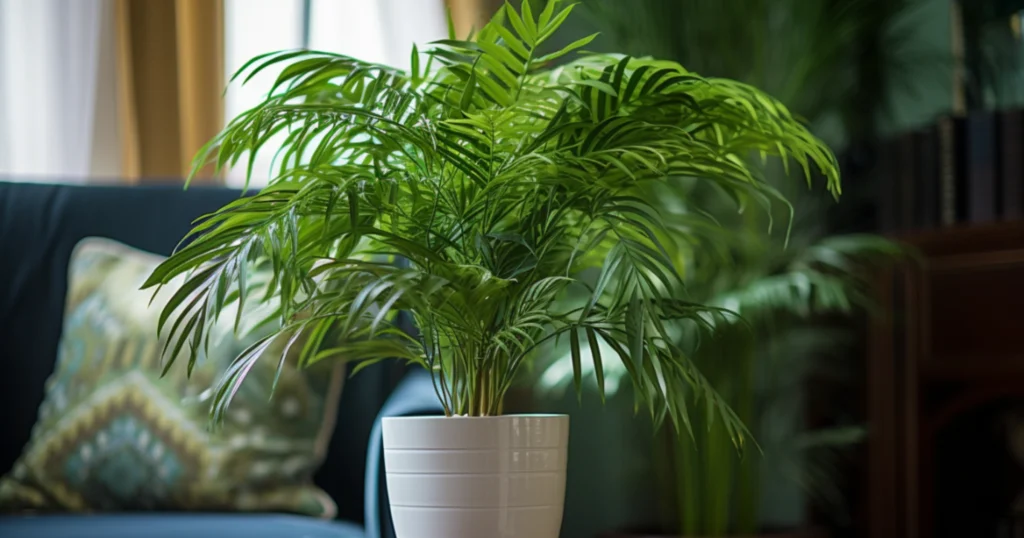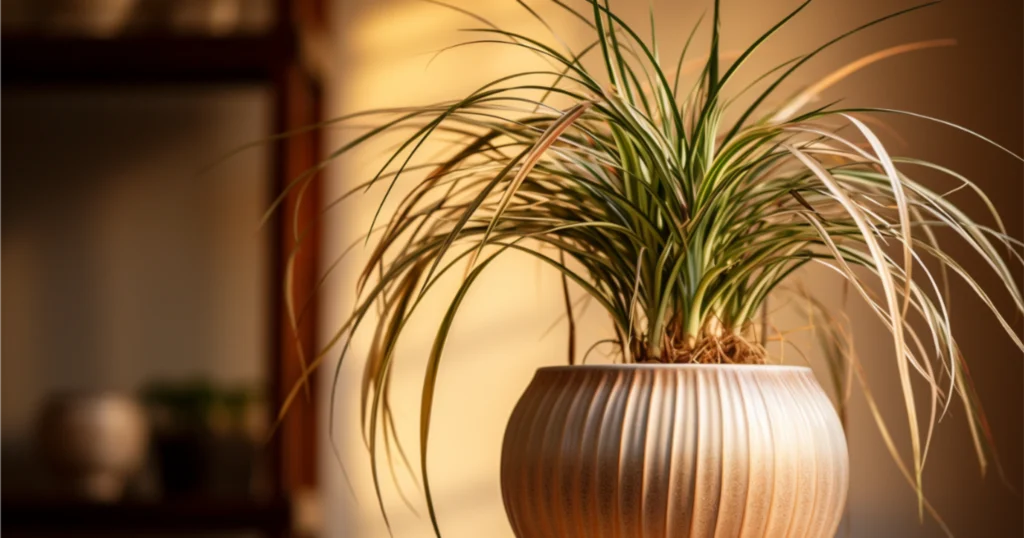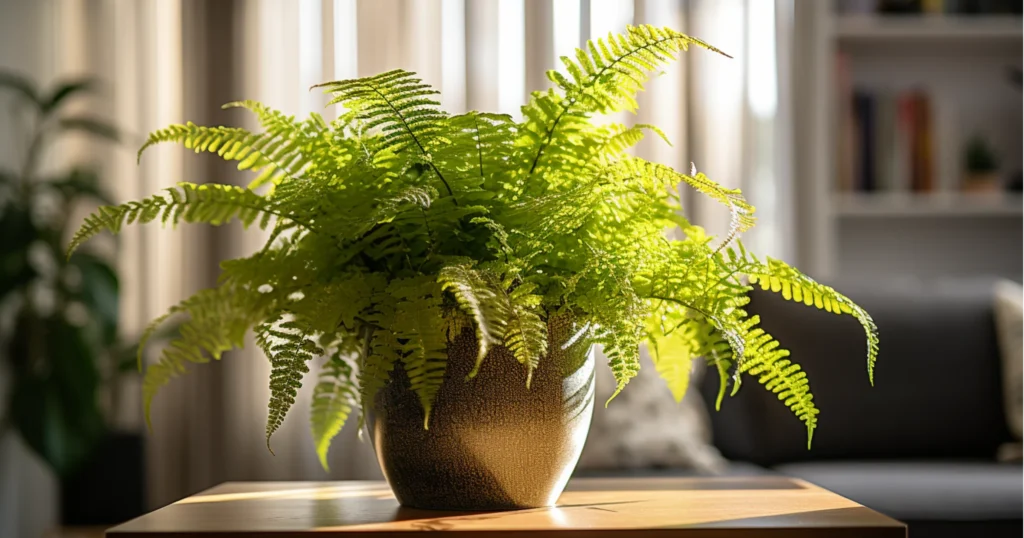In every home graced by the pitter-patter of feline paws, ensuring a secure and loving environment becomes a top priority. An oft-overlooked part of this care is making certain that the indoor foliage within our cozy sanctuaries is indeed, cat safe. Cats are inquisitive by nature and many have a penchant for gnawing on leafy greens. Thus, it becomes crucial to cultivate a ‘green space’ devoid of any toxic threats to your fur-coated family member. Ensuring your plants are non-toxic and feline-friendly can be the difference between a serene abode and an emergency vet visit.
Detailed Look at Cat-Friendly Plants
Rattlesnake Plant

The Rattlesnake Plant, or Calathea Lancifolia, offers an appealing aesthetic with its vibrantly patterned leaves and delicate movement in response to light changes. Most importantly, it’s non-toxic to cats. This tropical houseplant requires a humid environment and low light, making it a perfect indoor addition.
Spider Plant

Spider Plants are easy to grow and maintain, with arching leaves that are variegated with green and white. These non-toxic plants are resilient and can thrive under various conditions, making them an excellent option for new plant owners and a safe choice for homes with feline companions.
Parlor Palm

Parlor Palms, or Chamaedorea Elegans, are an excellent indoor plant, bringing a tropical touch to your home. They’re easy to maintain and are non-toxic to cats. These miniature palms thrive in bright indirect light and provide a fresh aesthetic to any room.
Calathea Orbifolia

Featuring large, round, silvery-green leaves, Calathea Orbifolia makes a striking statement in any home. This cat-safe plant enjoys low light conditions and a humid environment, making it an excellent indoor plant. Remember to keep the soil evenly moist for best growth.
Ponytail Palm

Despite the name, Ponytail Palms are not real palms but are cat-friendly succulents. They add a unique look with their bulbous trunk and cascading, hair-like leaves. They’re drought-resistant and need bright light, perfect for those forgetful about watering.
Air Plants

Air plants, or Tillandsia, are ideal for individuals seeking low-maintenance houseplants. They don’t require soil and can grow in a range of light conditions. They’re safe for cats and can be used in a variety of home decors due to their versatility.
Calathea Prayer Plant

Calathea Prayer Plants are famous for their leaves, which fold up as if in prayer during the evening. They’re safe for cats, love humidity, and prefer indirect light. Their interesting leaf movements and striking leaf patterns add dynamic beauty to any home.
Pineapple Plant

Pineapple Plants add a touch of the exotic to any home, and the dwarf varieties are safe for cats. They require lots of sunlight and well-drained soil. With proper care, they might even produce a small pineapple, adding a quirky feature to your home.
Cast Iron Plant

Cast Iron Plants are known for their durability and can survive in low light conditions, making them perfect for those corners that many plants won’t tolerate. They are hardy, easy to care for, and most importantly, non-toxic to cats.
Boston Fern

Boston Ferns, with their fluffy fronds and feathery leaves, are a classic choice for hanging baskets. They thrive in humidity and indirect light, making them perfect for bathrooms. As with other ferns, they’re safe for our furry friends.
String of Pearls

This succulent plant gets its name from the round, bead-like leaves that trail down, resembling a string of pearls. These plants enjoy bright light and infrequent watering. They’re a great hanging plant and are non-toxic to cats.
Nerve Plant

Nerve Plants are known for their vibrant vein patterns on dark green leaves. They enjoy high humidity and indirect light. Despite their delicate appearance, they are tough and safe for cats, making them a brilliant choice for cat owners.
African Violet

African Violets are beautiful, compact, flowering plants. Their fuzzy, round leaves and variety of flower colors can add a vibrant touch to any home. They prefer moderate to bright indirect light and are completely safe for cats.
Bamboo Palm

Bamboo Palms are fantastic air purifiers and are non-toxic to cats. They can tolerate low light conditions and enjoy humidity, making them an excellent addition to any room, providing tropical vibes while also ensuring your cat’s safety.
Basil

Basil is not just a culinary herb; it’s also a cat-safe plant. Its vibrant green leaves and aromatic scent make it a lovely addition to your home. Plus, it loves lots of sunlight and will add a fresh, herbaceous smell to your house.
Bromeliads

Bromeliads offer a tropical aesthetic with their vibrant, long-lasting flower displays. They’re easy to care for, preferring bright indirect light, and most importantly, are non-toxic to cats, making them a fantastic addition to any cat-friendly home.
Mistletoe Cactus

Unlike traditional cacti, Mistletoe Cacti are jungle dwellers. They have segmented, trailing stems and thrive in bright, indirect light. These cat-safe cacti are a unique addition to any plant collection and provide an exciting aesthetic contrast.
Stromanthe Triostar

Stromanthe Triostars are stunning, boasting dramatic variegated leaves that show off shades of pink, white, and green. They prefer low light and high humidity, perfect for a bathroom or kitchen. More importantly, they’re safe for cats.
Kangaroo Fern

Kangaroo Ferns are attractive houseplants with glossy, green fronds. These ferns love high humidity and indirect light, but can tolerate low light. Non-toxic and safe for cats, these ferns make a beautiful addition to any home decor.
Understanding the Greens in a Feline-Friendly Home

Choosing the perfect plant for a feline-inhabited home can be akin to navigating through a fun yet challenging maze. Just like humans, our purring pals can have unique reactions to different plants. Non-toxic doesn’t always translate to problem-free; even safe plants may trigger unexpected responses.
Next, consider a cat’s tummy. Like how some of us can’t handle that extra spicy dish, some cats may have more delicate digestive systems. Thus, the ingestion of even safe plants might result in a messy situation involving vomit or diarrhea. This doesn’t mean the plant is a villain, but it does indicate that the plant and your kitty might not be the best roommates.
Last but not least, while it’s fantastic to create a mini indoor jungle with feline-friendly plants, keeping a keen eye on your fur baby’s interactions with the green members of the household is key. If your feline friend decides to go on a plant-chewing spree, it could lead to problems like intestinal blockages.
As always, when in doubt, call in the pros – consult your trusted vet if you notice any changes in your cat’s behavior or well-being after a new plant enters your home. So, go on, let your inner botanist run wild while also keeping your cat’s well-being in mind!
Conclusion
Embracing the tranquility of nature indoors with houseplants while cohabiting with our cherished feline friends adds a unique touch of vibrancy to our lives. Ensuring these plants are cat-friendly guarantees a safe and serene haven for both parties.
These non-toxic plants not only enhance the aesthetics of our living spaces but also serve as amusement for our curious cats, all while purifying the air that we all breathe. Remember, each cat might react differently to various plants, so keep a close watch and consult a vet if necessary. The harmony of greenery and feline energy truly is a recipe for a joyful home!


